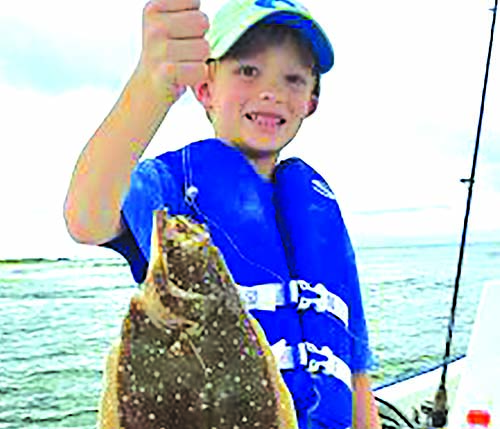What’s Biting: The Stealthy Flounder
The Stealthy Flounder
By David Rainer
Alabama coastal waters are blessed with more than one species of flounder. The Gulf flounder is found mainly along the beaches where the water is salty and the bottom is sandy. The mottled patterns and colors on the Gulf flounder are defined with distinct patterns. The second species is the southern flounder, which gets significantly larger than the Gulf flounder and has a much less-defined color pattern.
Both species are especially adept at camouflaging themselves. Flounders are able to change colors to adapt to their surroundings, and they can also become partially buried in soft bottoms and sand bottoms.
Stealth is what makes them such effective ambush predators and gives anglers along the Alabama Gulf Coast a chance to hook one of these flatfish, which are prized for their delicate, light flesh.
Flounder spend the winter months in the Gulf of Mexico, where both species spawn. That means as that the coastal waters cool this fall, the flounder will begin their fall migration toward the Gulf.
Unlike other popular inshore fish, flounder tend to follow similar routes to the Gulf each year. They concentrate in the channels and passes leading to the Gulf. With no cold front on the immediate horizon, the migration will likely start out slowly and then end in a solid stream of flounder once a significant weather shift occurs.
Flounder will concentrate in areas with baitfish and small crustaceans, which means anglers can find one spot and put multiple fish in the ice chest without moving the boat. Only the adult, spawning-age flounder migrate to the Gulf, so it’s a great chance to catch those flounder large enough for my favorite flounder dish – stuffed flounder.
When you find one of those migration routes, there are several ways to entice flounder into biting. When you can get them, bull minnows work like a champ for flounder. The minnows are hardy and stay on the hook very well. The one thing about the bull minnow is you need to give the flounder a little time to swallow the minnow before you set the hook. Flounder will also take live shrimp and minnow-shaped grubs that are hopped along the bottom. A strip of belly off the first flounder you catch gives a significant added enticement for the next flounder that sees your bait.
When the north winds finally move in, the shallow waters along the beach become a perfect place for gigging flounder. Of course, you don’t want a howling north wind, just a gentle breeze with a rising tide. The rising tide allows the flounder to come within feet of the beach as they settle into the bottom and wait for minnows or shrimp to swim past.
You’ll need a good flounder light to be able to spot the fish, which are extremely well camouflaged. When you spot the outline of a flounder, keep the light on the fish and approach slowly. When you’re ready to thrust the gig, aim low. The refraction of the water will make the fish appear to be farther than it really is. If your aim is good, keep your gig stuck in the sand while the fish thrashes. If you try to pick up the gig too early, you’ll likely lose the fish.
The flounder bag limit in Alabama is 10 fish per person with a 12-inch size minimum. A saltwater fishing license is required.
Speaking of stuffed flounder, take a 16-inch or larger flounder and scrape off the fine scales on both sides of the fish, remove the head and entrails and run a filet knife down the back from top to bottom. Slowly slice the flesh outward until you’ve made a large cavity that will hold the stuffing. I make simple stuffing with crabmeat, bread crumbs, butter and a dash of Tony Chachere’s seasoning. Use Old Bay if you prefer. Cram as much stuffing as you desire into the flounder cavity. I drizzle enough olive oil to coat the fish and the bottom of a cookie sheet. Pop the fish into a preheated oven and bake for 25 to 30 minutes. What comes out of the oven is one of the best meals you’ll experience on the Gulf Coast.
David Rainer has written about the great outdoors on the Alabama Gulf Coast for more than 20 years. The outdoors editor at the Mobile Press-Register for 14 years, he is past president of the Southeastern Outdoor Press Association and currently serves on the Gulf of Mexico Fishery Management Council’s Outreach and Education Advisory Panel and the Alabama Gulf Coast Reef & Restoration Foundation board.

